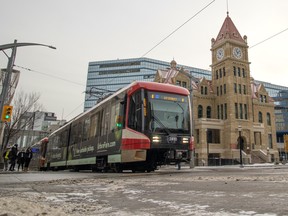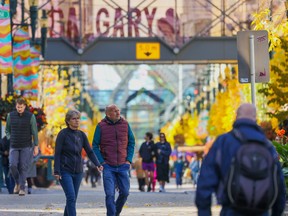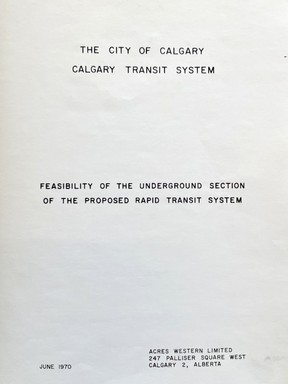Leong: How can Calgary build a CTrain tunnel downtown?

[ad_1]
Stephen Avenue subway remains a dream — but it’s a dream that comes with an instruction manual

Article content
As we eagerly await a provincially commissioned report expected this month offering a new alignment for the Green Line LRT through downtown Calgary, one option is clearly off the table.
Advertisement 2
Article content
Article content
Article content
The reason this report is even being compiled is due to a recent surge of opposition to the previously proposed tunnel sections in the city centre.
While we might be currently feeling cost- and risk-averse, Calgary along with its provincial and federal partners will eventually be confronted with having to move some of the CTrain system underground.
As I’ve previously explained, the current setup for trains on the Blue and Red lines is maxed out, with no possibility of redundancy and resiliency for service downtown.
Four-car trains are currently sidelined due to infrastructure work but once those return to service, Calgary Transit will be short of options to increase service. Just as the city continues to grow, passenger numbers have rebounded from COVID-19 pandemic lows.
Article content
Advertisement 3
Article content
Any future increase in capacity downtown will necessarily come from an underground component, given the foregone conclusion that the Green Line will be built through the city centre without a subway.

Stephen Avenue subway proposed … more than 50 years ago
Luckily, preliminary investigations were done more than five decades ago for a proposed tunnel under Stephen Avenue to accommodate what was then a planned rapid transit system.
A portion actually got built, starting near the Victoria Park/Stampede Station, passing under the Canadian Pacific Kansas City tracks and ending at the Central Library.
There’s also short spur veering west from the tunnel heading toward Stephen Avenue. If you take the CTrain and peer toward the west side of the tunnel, you’ll see the blocked entrance.
Advertisement 4
Article content
But as for the rest, it remains a pipe dream for now — but a dream that comes with an instruction manual worth highlighting and learning from.
The June 1970 report, titled Feasibility of the Underground Section of the Proposed Rapid Transit System, suggested a shallow tunnel under Stephen Avenue built by cut-and-cover, noting all the potential issues and disruptions this could entail.
Of the challenges the report’s authors highlighted, including concerns about the sturdiness of building basements and potential intrusions into the subway’s right-of-way, groundwater appeared to be the most complicated.
“There is a large degree of uncertainty as to the severity of the groundwater problem, and conservative assumptions must be made at this preliminary stage,” the report stated. “Special measures will have to be taken during construction to reduce infiltration rates and remove water from the excavation.”
Advertisement 5
Article content
More testing would be needed, the report added. As for what to do about the water once construction was complete, it had this to say: “It is felt that it is not necessary to fully waterproof the structure, as a moderate amount of water infiltration in the tunnel is acceptable.
“In the stations it is important to avoid any signs of water infiltration. This can be easily accomplished by finishing the station areas with a ceiling and wall cover which will divert any water leakage to drains at the sides of the tunnels.”

Problem isn’t engineering and construction, but having a plan
It’s been 54 years since this report was published and a lot has changed.
The streetscape has evolved has along the proposed tunnel’s path.
Design standards have also improved, particularly when it comes to accessibility. New above-ground or underground stations would need elevators, for example.
Advertisement 6
Article content
A lot of real life has happened as well: The 2013 flood was very instructive about the impact of high water on the city centre and how we can prevent this in the first place.
As a result, costs for a tunnel under Stephen Avenue might be higher than previously imagined. Excluding expropriations and demolition, it was believed this could be built for $20.2 million. Adjusted for inflation, that would be about $160 million in 2024. This seems wildly optimistic.
It’s clearly possible to build and maintain complicated infrastructure below grade, given that we already have short rail tunnels and larger underground parkades all over downtown Calgary.
The stumbling block isn’t engineering or construction, but rather the articulation of a clear project vision and a realistic price tag to execute any kind of downtown transit tunnel.
Coincidentally, these might have been the Green Line’s greatest weaknesses.
Recommended from Editorial
-

Bell: Gondek, Dreeshen face off on Calgary Green Line LRT plans
-

How Green Line went from foundational project to multibillion-dollar bust
Article content




